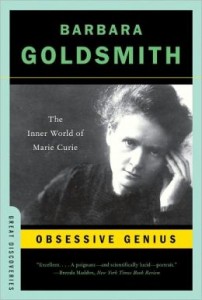



Curie said she was strong enough to overcome the constraints of the body, its need for food and warmth. She described her paltry diet, her cold garret room and her poverty, using such details to highlight the legitimacy of her apprenticeship to science. That life story, which has shaped virtually every biography of her since, emphasized the irrelevance of the physical body to scientific work. In all these discussions, Goldsmith makes good on her promise to excavate an “inner world”.Īs Goldsmith acknowledges, Marie Curie invented her own life story in the ‘autobiographical notes’ that accompanied her 1929 study of Pierre after his death. A final chapter outlines the family's enduring legacy and continuing scientific achievement. Goldsmith then considers the Curies' incautious handling of radium, which she attributes to their love of their own discovery. The public scandal over her affair with the physicist Paul Langevin is considered primarily in terms of its depressive effect on Marie, rather than in sociological terms, which could illuminate gender relations in early twentieth-century France. The Curies' interest in spiritualism, their attendance at séances and their involvement with the Society for Psychical Research are explored in the context of Marie's reactions to Pierre's death. She addresses Marie's decision to involve her 17-year-old daughter Irene in the dangerous and gruesome war work of X-raying stricken soldiers, and she ponders Eve's estrangement from her mother. Goldsmith turns her attention to Curie's shifting ways of writing about her husband Pierre in the diary written after he was killed in a traffic accident, and to the mixed messages in Pierre and Marie's discussions of the commercial applications of their work.


 0 kommentar(er)
0 kommentar(er)
